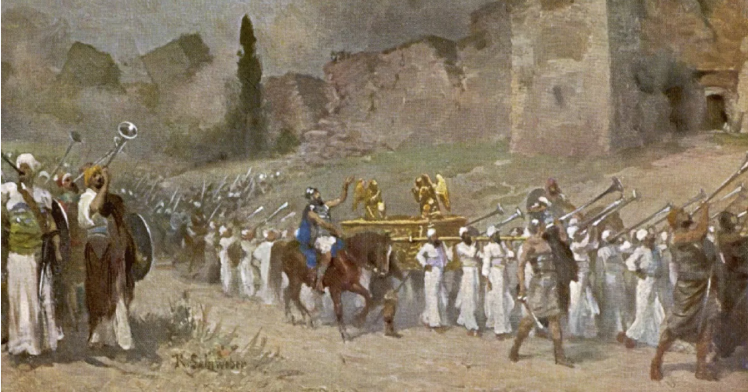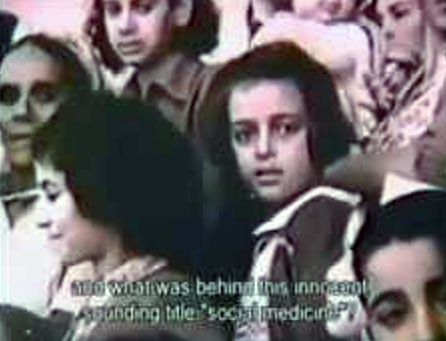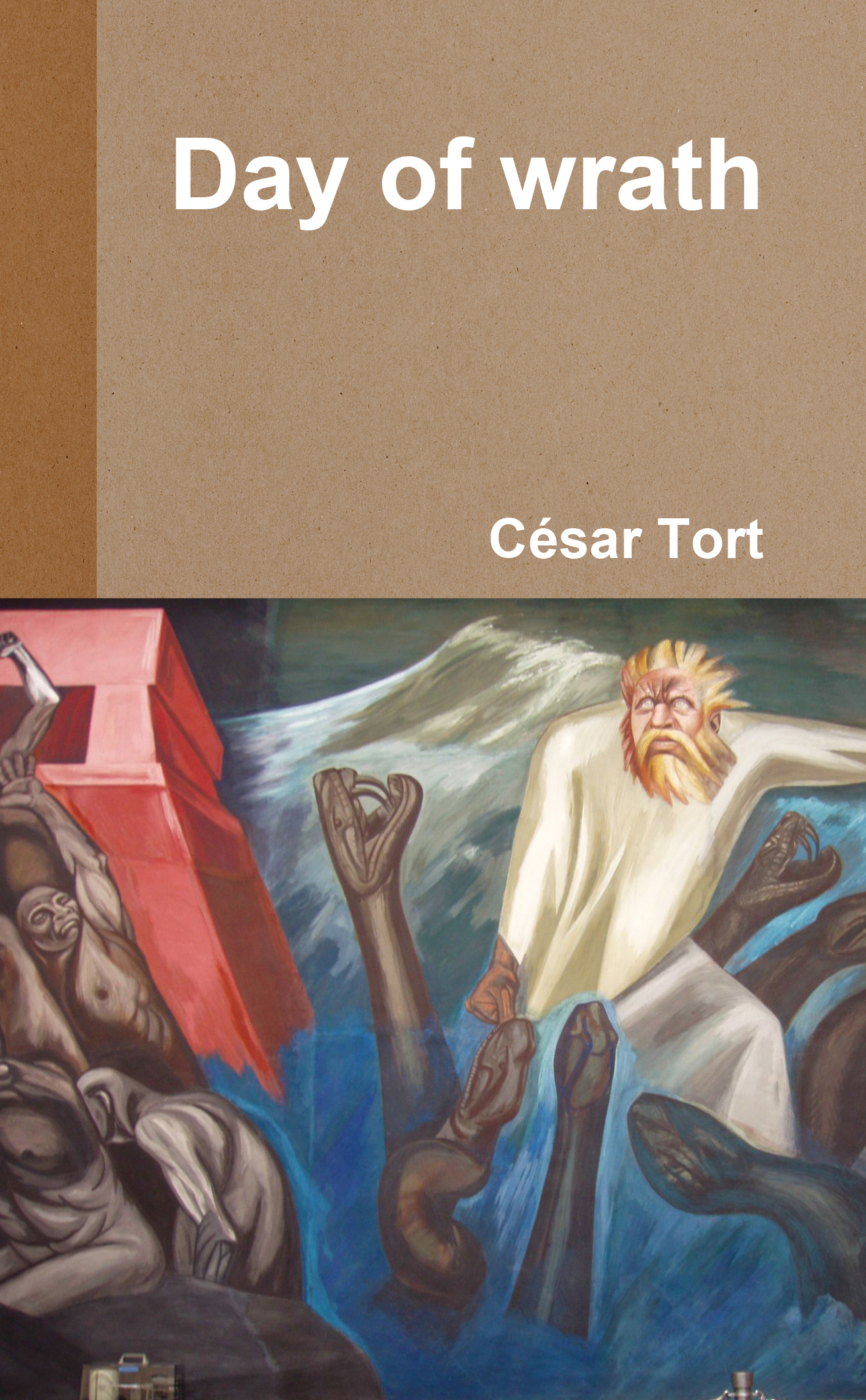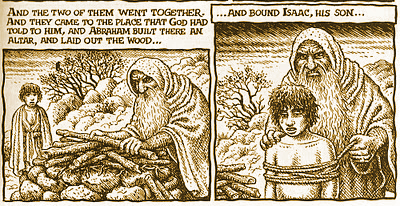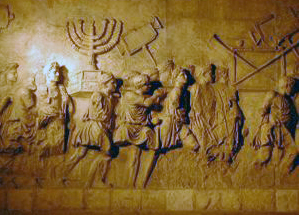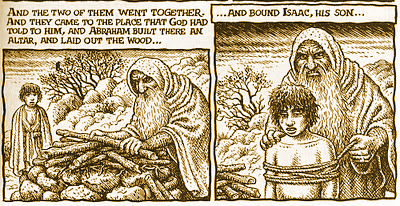“And such a Dies Irae may be closer than we dream…”
—Arthur C. Clarke
Editor’s hatnote of June 15, 2016: I posted this entry in the first day of 2014. Today I’m “sticking” it at the top because what William Pierce wrote in 1978 reflects perfectly the POV of this site, especially the paragraphs preceding his words: “The fact is that we are all responsible, as individuals, for the morals and the behavior of our race as a whole.”

I drove to the one place I was reasonably sure was still manned by Organization personnel: the old gift shop in Georgetown. It was just outside the new Pentagon security perimeter. I arrived there as dusk was falling and pulled the pickup truck around to the rear service entrance.
I had just climbed out of the truck and stepped into the shadows at the rear of the building when the world around me suddenly lit up as bright as noon for a moment. First there was an intensely bright flash of light, then a weaker glow which cast moving shadows and changed from white to yellow to red in the course of a few seconds.
I ran to the alley, so that I could have a more nearly unobstructed view of the sky. What I saw chilled my blood and caused the hairs on the back of my neck to rise. An enormous, bulbous, glowing thing, a splotchy ruby-red in color for the most part but shot through with dark streaks and also dappled with a shifting pattern of brighter orange and yellow areas, was rising into the northern sky and casting its ominous, blood-red light over the land below. It was truly a vision from hell.
As I watched, the gigantic fireball continued to expand and rise, and a dark column, like the stem of an immense toadstool, became visible beneath it. Bright, electric-blue tongues of fire could be seen flickering and dancing over the surface of the column. They were huge lightning bolts, but at their distance no thunder could be heard from them. When the noise finally came, it was a dull, muffled sound, yet still overwhelming: the sort of sound one might expect to hear if an inconceivably powerful earthquake rocked a huge city and caused a thousand 100-story skyscrapers to crumble into ruins simultaneously.
I realized that I was witnessing the annihilation of the city of Baltimore, 35 miles away, but I could not understand the enormous magnitude of the blast. Could one of our 60-kiloton bombs have done that? It seemed more like what one would expect from a megaton bomb.
The government news reports that night and the next day claimed that the warhead which destroyed Baltimore, killing more than a million people, as well as the blasts which destroyed some two-dozen other major American cities the same day, had been set off by us. They also claimed that the government had counterattacked and destroyed the “nest of racist vipers” in California. As it turned out, both claims were false, but it was two days before I learned the full story of what had actually happened.
Meanwhile, it was with a feeling of deepest despair that I and half-a-dozen others who were gathered around the television set in the darkened basement of the gift shop late that night heard a newscaster gloatingly announce the destruction of our liberated zone in California. He was a Jew, and he really let his emotions carry him away; I have never before heard or seen anything like it.
After a solemn rundown of most of the cities which had been hit that day, with preliminary estimates of the death tolls (sample: “and in Detroit, which the racist fiends struck with two of their missiles, they murdered over 1.4 million innocent American men, women, and children of all races…”), he came to New York. At that point tears actually appeared in his eyes and his voice broke.
 Between sobs he gasped out the news that 18 separate nuclear blasts had leveled Manhattan and the surrounding boroughs and suburbs out to a radius of approximately 20 miles, with an estimated 14 million killed outright and perhaps another five million expected to die of burns or radiation sickness within the next few days. Then he lapsed into Hebrew and began a strange, wailing chant, as tears streamed down his cheeks and his clenched fists pounded his breast.
Between sobs he gasped out the news that 18 separate nuclear blasts had leveled Manhattan and the surrounding boroughs and suburbs out to a radius of approximately 20 miles, with an estimated 14 million killed outright and perhaps another five million expected to die of burns or radiation sickness within the next few days. Then he lapsed into Hebrew and began a strange, wailing chant, as tears streamed down his cheeks and his clenched fists pounded his breast.
After a few seconds of this he recovered, and his demeanor changed completely. Anguish was replaced first by a burning hatred for those who had destroyed his beloved, Jewish New York City, then by an expression of grim satisfaction which gradually turned into an exultant gloating: “But we have taken our vengeance against our enemies, and they are no more. Time and again, throughout history, the nations have risen up against us and tried to expel us or kill us, lot we have always triumphed in the end. No one can resist us. All those who have tried—Egypt, Persia, Rome, Spain, Russia, Germany—have themselves been destroyed, and we have always emerged triumphant from the ruins. We have always survived and prospered. And now we have utterly crushed the latest of those who have raised their hands against us. Just as Moshe smote the Egyptian, so have we smitten the Organization.”
His tongue flickered wetly over his lips and his dark eyes gleamed balefully as he described the hail of nuclear annihilation which he said had been unleashed on California that very afternoon: “Their precious racial superiority did not help them a bit when we fired hundreds of nuclear missiles into the racist stronghold,” the newscaster gloated. “The White vermin died like flies. We can only hope they realized in their last moments that many of the loyal soldiers who pressed the firing buttons for the missiles which killed them were Black or Chicano or Jewish. Yes, the Whites and their criminal racial pride have been wiped out in California, but now we must kill the racists everywhere else, so that racial harmony and brotherhood can be restored to America. We must kill them! Kill them! Kill! Kill!…”
Then he lapsed into Hebrew again, and his voice became louder and harsher. He stood up and leaned into the camera, an incarnation of pure hatred, as he shrieked and gibbeted in his alien tongue, gobs of saliva flying from his mouth and dribbling down his chin.
This extraordinary performance must have been embarrassing to some of his less emotional brethren, because he was suddenly cut off in mid-shriek and replaced by a Gentile, who continued to give out revised casualty estimates into the early hours of the morning.
Gradually, during the next 48 hours, we learned the true story of that dreadful Thursday, both from later and more nearly accurate government newscasts and from our own sources. The first and most important news we received came early Friday morning, in a coded message from Revolutionary Command to all the Organization’s units around the country: California had not been destroyed! Vandenberg had been annihilated, and two large missiles had struck the city of Los Angeles, causing widespread death and destruction, but at least 90 per cent of the people in the liberated zone had survived, partly because they had been given a few minutes advance warning and had been able to take shelter.
Unfortunately for the people in other parts of the country, there was no advance warning, and the total death toll—including those who have died of burns, other wounds, and radiation in the last 10 days-is approximately 60 million. The missiles which caused these deaths, however, were not ours—except in the case of New York City, which received a barrage first from Vandenberg and then from the Soviet Union.
Baltimore, Detroit, and the other American cities which were hit—even Los Angeles—were all the victims of Soviet missiles. Vandenberg AFB was the only domestic target hit by the U.S. government.
The cataclysmic chain of events began with an extraordinarily painful decision by Revolutionary Command. Reports being received by RC in the first week of this month indicated a gradual but steady shift of the balance of power from the military faction in the government, which wanted to avoid a nuclear showdown with us, to the Jewish faction, which demanded the immediate annihilation of California. The Jews feared that otherwise the existing stalemate between the liberated zone and the rest of the country might become permanent, which would mean an almost certain victory for us eventually.
To prevent this they went to work behind the scenes in their customary manner, arguing, threatening, bribing, bringing pressure to bear on one of their opponents at a time. They had already succeeded in arranging the replacement of several top generals by their own creatures, and RC saw the last chance disappearing of avoiding a full-scale exchange of nuclear missiles with government forces.
 So we decided to preempt. We struck first, but not at the government’s forces. We fired all our missiles from Vandenberg (except for half-a-dozen targeted on New York) at two targets: Israel and the Soviet Union. As soon as our missiles had been launched, RC announced the news to the Pentagon via a direct telephone link. The Pentagon, of course, had immediate confirmation from its own radar screens, and it had no choice but to follow up our salvo with an immediate and full-scale nuclear attack of its own against the Soviet Union, in an attempt to knock out as much of the Soviet retaliatory potential as possible.
So we decided to preempt. We struck first, but not at the government’s forces. We fired all our missiles from Vandenberg (except for half-a-dozen targeted on New York) at two targets: Israel and the Soviet Union. As soon as our missiles had been launched, RC announced the news to the Pentagon via a direct telephone link. The Pentagon, of course, had immediate confirmation from its own radar screens, and it had no choice but to follow up our salvo with an immediate and full-scale nuclear attack of its own against the Soviet Union, in an attempt to knock out as much of the Soviet retaliatory potential as possible.
The Soviet response was horrendous, but spotty. They fired everything they had left at us, but it simply wasn’t enough. Several of the largest American cities, including Washington and Chicago, were spared.
What the Organization accomplished by precipitating this fateful chain of events is fourfold: First, by hitting New York and Israel, we have completely knocked out two of world Jewry’s principal nerve centers, and it should take them a while to establish a new chain of command and get their act back together.
Second, by forcing them to take a decisive action, we pushed the balance of power in the U.S. government solidly back toward the military leaders. For all practical purposes, the country is now under a military government.
Third, by provoking a Soviet counterattack, we did far more to disrupt the System in this country and break up the orderly pattern of life of the masses than we could have done by using our own weapons against domestic targets—and we still have most of our 60-kiloton warheads left! That will be of enormous advantage to us in the days ahead.
Fourth, we have eliminated a major specter which had been hanging over our plans before: the specter of Soviet intervention after we and the System had fought it out with each other.
We took an enormous chance, of course: first, that California would be devastated in the Soviet counterattack—and second, that the U.S. military would lose its cool and use its nuclear weaponry on California even though, except for Vandenberg, there was no nuclear threat there to be knocked out. In both cases the fortunes of war have been at least moderately kind to us—although the threat from the U.S. military is by no means over.
 What we lost, however, is substantial: about an eighth of the Organization’s members, and nearly a fifth of the White population of the country—not to mention an unknown number of millions of racial kinsmen in the Soviet Union. Fortunately, the heaviest death toll in this country has been in the largest cities, which are substantially non-White.
What we lost, however, is substantial: about an eighth of the Organization’s members, and nearly a fifth of the White population of the country—not to mention an unknown number of millions of racial kinsmen in the Soviet Union. Fortunately, the heaviest death toll in this country has been in the largest cities, which are substantially non-White.
All in all, the strategic situation of the Organization relative to the System is enormously improved, and that is what really counts. We are willing to take as many casualties as necessary—just so the System takes proportionately more. All that matters, in the long run, is that when the smoke has finally cleared the last battalion in the field is ours. […]
October 28
Just back from more than a month in Baltimore—what’s left of it. I and four others from here hauled a batch of portable radioactivity-metering equipment up to Silver Spring, where we linked up with a Maryland unit and continued north to the vicinity of Baltimore. Since the main roads were totally impassable, we had to walk across country more than halfway, commandeering a truck for only the last dozen miles.
Although more than two weeks had passed since the bombing, the state of affairs around Baltimore was almost indescribably chaotic when we arrived. We didn’t even try to go into the burned out core of the city, but even in the suburbs and countryside 10 miles west of ground zero, half the buildings had burned. Even the secondary roads in and around the suburbs were littered with the burned hulks of vehicles, and nearly everyone we encountered was on foot.
Groups of scavengers were everywhere, poking through ruined stores, foraging in the fields with backpacks, carrying bundles of looted or salvaged goods—mostly food, but also clothing, building materials, and everything else imaginable—to and fro like an army of ants.
And the corpses! They were another good reason for staying away from the roads as much as possible. Even in the areas where relatively few people were killed by the initial blast or by subsequent radiation sickness, the corpses were strewn along the roads by the thousands. They were nearly all refugees from the blast area.
Close to the city one saw the bodies of those who had been badly burned by the fireball; most of them had not been able to walk more than a mile or so before they collapsed. Further out were those who had been less seriously burned. And far out into the countryside were the corpses of those who had succumbed to radiation days or weeks later. All had been left to rot where they fell, except in those few areas where the military had restored a semblance of order.
 We had at that time only about 40 Organization members among the survivors in the Baltimore area. They had been engaged in sabotage, sniping, and other guerrilla efforts against the police and military personnel there during the first week after the blast. Then they gradually discovered that the rules of the game had changed.
We had at that time only about 40 Organization members among the survivors in the Baltimore area. They had been engaged in sabotage, sniping, and other guerrilla efforts against the police and military personnel there during the first week after the blast. Then they gradually discovered that the rules of the game had changed.
They found out that it was no longer necessary to operate as furtively as they had before. The System’s troops returned their fire when attacked, but did not pursue them. Outside a few areas, the police no longer attempted to undertake systematic searches of persons and vehicles, and there were no house raids. The attitude almost seemed to be, “Don’t bother us, and we won’t bother you.”
The civilian survivors also tended to take a much more nearly neutral attitude than before. There was fear of the Organization, but very little overt expression of hostility. The people did not know whether we were the ones who had fired the missile which destroyed their city, as the System broadcasts claimed, but they seemed about as disposed to blame the System for letting it happen as us for doing it.
The holocaust through which the people up there had passed had clearly convinced them quite thoroughly of one thing: the System could no longer guarantee their security. They no longer had even a trace of confidence in the old order; they merely wanted to survive now, and they would turn to anyone who could help them stay alive a while longer.
Sensing this changed attitude, our members had begun recruiting and organizing among the survivors around Baltimore in semi-public fashion and meeting with sufficient success that Revolutionary Command authorized the attempt to establish a small liberated zone west of the city.
The 11 of us who had come up from the Washington suburbs to help pitched in with enthusiasm, and within a few days we had established a reasonably defensible perimeter enclosing about 2,000 houses and other buildings with a total of nearly 12,000 occupants. My principal function was to carry out a radiological survey of the soil, the buildings, the local vegetation, and the water sources in the area, so that we could be sure of freedom from dangerous levels of nuclear radiation resulting from fallout.
We organized about 300 of the locals into a fairly effective militia and provided them with arms. It would be risky at this stage to try to arm a bigger militia than that, because we haven’t had an opportunity to ideologically condition the local population to the extent we’d like, and they still require close observation and tight supervision. But we picked the best prospects among the able-bodied males in the enclave, and we do have quite a bit of experience in picking people. I’ll not be surprised if half our new militiamen eventually graduate to membership in the Organization, and some will probably even be admitted to the Order.
Yes, I think that, by and large, we can count on our new recruits. There’s still a great deal of basically sound human material left in this country, despite the widespread moral corruption. After all, that corruption has been produced largely by the instilling of an alien ideology and an alien set of values in a people disoriented by an unnatural and spiritually unhealthy life-style. The hell they’re going through now is at least knocking some of the foolishness out of them and leaving them quite a bit more receptive to a correct world view than they were before.
 Our first task was to weed out and eliminate the alien elements and the race criminals from the new enclave. It’s astounding how many dark, kinky-haired Middle Easterners have invaded this country in the last decade. I believe they have taken over every restaurant and hot dog stand in Maryland. We must have shot at least a dozen Iranians, just in our little suburban enclave, and twice that many escaped when they realized what was happening.
Our first task was to weed out and eliminate the alien elements and the race criminals from the new enclave. It’s astounding how many dark, kinky-haired Middle Easterners have invaded this country in the last decade. I believe they have taken over every restaurant and hot dog stand in Maryland. We must have shot at least a dozen Iranians, just in our little suburban enclave, and twice that many escaped when they realized what was happening.
Then we formed the people into labor brigades to carry out a number of necessary functions, one of which was the sanitary disposal of the hundreds of corpses of refugees. The majority of these poor creatures were White, and I overheard one of our members refer to what happened to them as “a slaughter of the innocents.”
I am not sure that is a correct description of the recent holocaust. I am sorry, of course, for the millions of White people, both here and in Russia, who died—and who have yet to die before we have finished—in this war to rid ourselves of the Jewish yoke. But innocents? I think not. Certainly, that term should not be applied to the majority of the adults.
After all, is not man essentially responsible for his condition—at least, in a collective sense? If the White nations of the world had not allowed themselves to become subject to the Jew, to Jewish ideas, to the Jewish spirit, this war would not be necessary. We can hardly consider ourselves blameless. We can hardly say we had no choice, no chance to avoid the Jew’s snare. We can hardly say we were not warned.
Men of wisdom, integrity, and courage have warned us over and over again of the consequences of our folly. And even after we were well down the Jewish primrose path, we had chance after chance to save ourselves—most recently 52 years ago, when the Germans and the Jews were locked in struggle for the mastery of central and eastern Europe.
We ended up on the Jewish side in that struggle, primarily because we had chosen corrupt men as our leaders. And we had chosen corrupt leaders because we valued the wrong things in life. We had chosen leaders who promised us something for nothing; who pandered to our weaknesses and vices; who had nice stage personalities and pleasant smiles, but who were without character or scruple. We ignored the really important issues in our national life and gave free rein to a criminal System to conduct the affairs of our nation as it saw fit, so long as it kept us moderately well-supplied with bread and circuses.
And are not folly, willful ignorance, laziness, greed, irresponsibility, and moral timidity as blameworthy as the most deliberate malice? Are not all our sins of omission to be counted against us as heavily as the Jew’s sins of commission against him? In the Creator’s account book, that is the way things are reckoned. Nature does not accept “good” excuses in lieu of performance. No race which neglects to insure its own survival, when the means for that survival are at hand, can be judged “innocent,” nor can the penalty exacted against it be considered unjust, no matter how severe.
Immediately after our success in California this summer, in my dealings with the civilian population there I had it thoroughly impressed on me why the American people do not deserve to be considered “innocents.” Their reaction to the civil strife there was based almost solely on the way it affected their own private circumstances. For the first day or two—before it dawned on most people that we might actually win—the White civilians, even racially conscious ones, were generally hostile; we were messing up their life-style and making their customary pursuit of pleasure terribly inconvenient.
Then, after they learned to fear us, they were all too eager to please us. But they weren’t really interested in the rights and wrongs of the struggle; they couldn’t be bothered with soul-searching and long-range considerations. Their attitude was: “Just tell us what we’re supposed to believe, and we’ll believe it.” They just wanted to be safe and comfortable again as soon as possible. And they weren’t being cynical; they weren’t jaded sophisticates, but ordinary people.
The fact is that the ordinary people are not really much less culpable than the not-so-ordinary people, than the pillars of the System. Take the political police, as an example. Most of them—the White ones—are not especially evil men. They serve evil masters, but they rationalize what they do; they justify it to themselves, some in patriotic terms (“protecting our free and democratic way of life”) and some in religious or ideological terms (“upholding Christian ideals of equality and justice”).
One can call them hypocrites—one can point out that they deliberately avoid thinking about anything which might call into question the validity of the shallow catch-phrases with which they justify themselves—but is not everyone who has tolerated the System also a hypocrite, whether he actively supported it or not? Is not everyone who mindlessly parrots the same catch-phrases, refusing to examine their implications and contradictions, whether he uses them as justifications for his deeds or not, also to be blamed?
I cannot think of any segment of White society, from the Maryland red-necks and their families whose radioactive bodies we bulldozed into a huge pit a few days ago to the university professors we strung up in Los Angeles last July, which can truly claim that it did not deserve what happened to it. It was not so many months ago that nearly all those who are wandering homeless and bemoaning their fate today were talking from the other side of their mouths.
Not a few of our people have been badly roughed up in the past—and two that I know of were killed—when they fell into the hands of red-necks: “good ol’ boys” who, although not liberals or shabbos goyim in any way, had no use for “radicals” who wanted to “overthrow the gummint.” In their case it was sheer ignorance.
But ignorance of that sort is no more excusable than the bleating, sheep-like liberalism of the pseudo-intellectuals who have smugly promoted Jewish ideology for so many years; or than the selfishness and cowardice of the great American middle class who went along for the ride, complaining only when their pocketbooks suffered.
No, talk of “innocents” has no meaning. We must look at our situation collectively, in a race-wide sense. We must understand that our race is like a cancer patient undergoing drastic surgery in order to save his life. There is no sense in asking whether the tissue being cut out now is “innocent” or not. That is no more reasonable than trying to distinguish the “good” Jews from the bad ones—or, as some of our thicker-skulled “good ol’ boys” still insist on trying, separating the “good niggers” from the rest of their race.
 The fact is that we are all responsible, as individuals, for the morals and the behavior of our race as a whole. There is no evading that responsibility, in the long run, any more for the members of our own race than for those of other races, and each of us individually must be prepared to be called to account for that responsibility at any time. In these days many are being called.
The fact is that we are all responsible, as individuals, for the morals and the behavior of our race as a whole. There is no evading that responsibility, in the long run, any more for the members of our own race than for those of other races, and each of us individually must be prepared to be called to account for that responsibility at any time. In these days many are being called.
But the enemy is also paying a price. He’s still got a grip on things here, more or less, but he’s just about finished outside North America. Although the government is blocking most of the foreign news from the networks here, we have been receiving clandestine reports from our overseas units and also monitoring the European news broadcasts.
Within 24 hours after we hit Tel Aviv and half-a-dozen other Israeli targets last month, hundreds of thousands of Arabs were swarming across the borders of occupied Palestine. Most of them were civilians, armed only with knives or clubs, and Jewish border guards mowed down thousands of them, until their ammunition was exhausted. The Arabs’ hatred, pent up for 45 years, drove them on—across mine fields, through Jewish machine-gun fire, and into the radioactive chaos of burning cities, their single thought being to slay the people who had stolen their land, killed their fathers, and humiliated them for two generations. Within a week the throat of the last Jewish survivor in the last kibbutz and in the last, smoking ruin in Tel Aviv had been cut.
